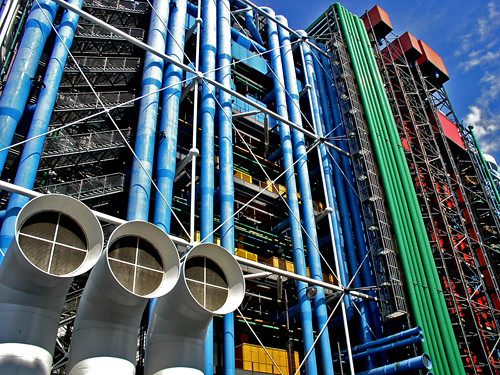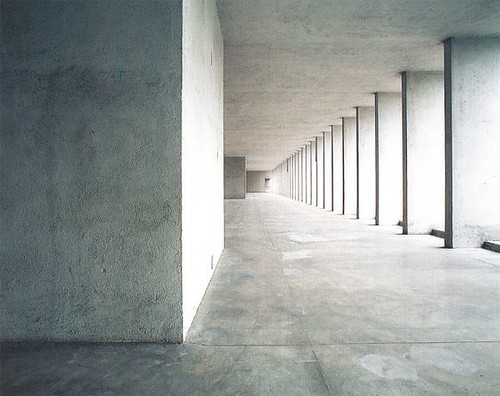Late Modernism is a study of how modernism was transformed, assimilated, and sometimes institutionalized after 1945, before being challenged in the 1960s and 1970s
In the visual arts, Late Modernism encompasses the overall production of most recent art made between the aftermath of World War II and the early years of the 21st century. The terminology often points to similarities between late Modernism and Post-Modernism although there are differences.

Image source: https://search.creativecommons.org/photos/b6649692-0bdc-4407-b87f-22045112d3ba by www.alfieianni.com
Which were the main features of this period?
Like the earlier Modern buildings, Late Modernism architecture was reductive and functionalist. In addition to refining or reformulating earlier Modern concepts, Late Modernism also rehabilitated certain out-of-favor Modernist features including radial corners, glass blocks, and belt courses.

Image source:https://search.creativecommons.org/photos/b6649692-0bdc-4407-b87f-22045112d3ba by www.alfieianni.com
Image source: https://search.creativecommons.org/photos/c8c4c717-1ee5-415f-b87f-aa7294ea07bf by Stephen Richards
Which were the features of late modern buildings?
Late Twentieth-Century Late Modern buildings avoided most of the allusions, irony and self- mockery of post-modernism, although they sometimes paid homage to Inter-War Functionalism.
Which were the main features of late modern architecture?
- Horizontally oriented
- Ribbon windows, belt courses
- Hooded or deep set windows
- Large areas without windows
- Use of industrial materials like concrete
- Dramatic sculptural conception of building’s volumes
- No ornament
- Walls eaveless or with boxed or cantilevered eaves
- Decorative use of functional features
- Flat and shed roof

Image source:https://search.creativecommons.org/photos/63faee4d-1db4-42e2-bc1e-39b0ee0493fa by stevecadman

Image source:https://search.creativecommons.org/photos/ca93c234-1639-4484-9cda-91d2f6e66b15 by seier+seier
Which are the difference between postmodernism and late modernism?
The most obvious difference between the two styles was that Late Modern style architects imagined their buildings not as a simple straightforward set of volumes, but as highly articulated sculptural forms, albeit rectangular ones. This is the case even when these sculptural forms are simply the result of structural engineering considerations.
Radical movements in Modern Art
Radical movements in Modernism, Modern art, and radical trends regarded as influential and potentially as precursors to late modernism and postmodernism emerged around World War I and particularly in its aftermath. With the introduction of the use of industrial artifacts in art, movements such as Cubism, Dada and Surrealism as well as techniques such as collage and artforms such as Cinema and the rise of reproduction as a means of creating artworks. Both Pablo Picasso the Modernist and Marcel Duchamp the rebel created important and influential works from found objects.

Image source: https://search.creativecommons.org/photos/6ce994de-4b7a-406c-9b6c-7c3b210e54ed by bianca.maggio
Info source:
For more references, please also visit: http://www.jbdesign.it/idesignpro
